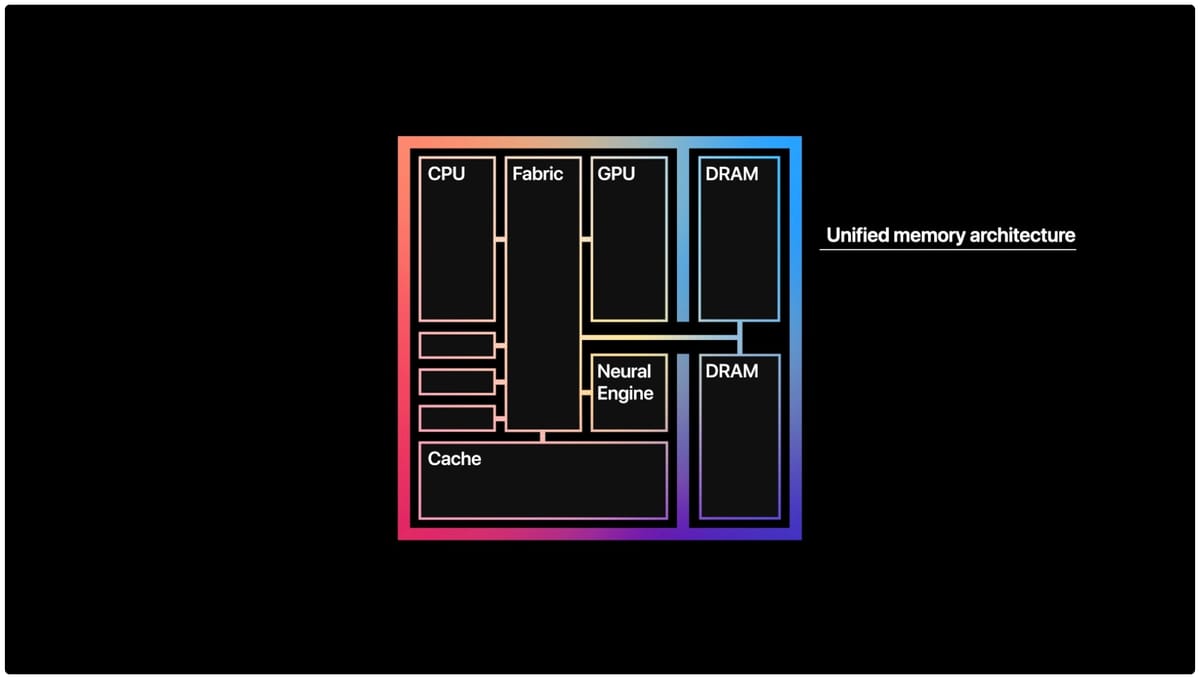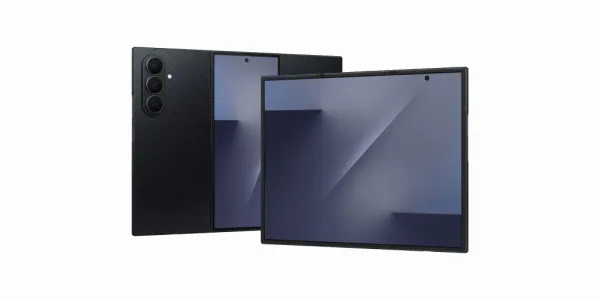Why Apple’s Unified Memory Outshines Conventional PC RAM & Storage
Learn how Apple’s unified memory surpasses traditional RAM, offering superior speed, energy savings, and seamless performance across tasks like gaming, AI, video editing, and daily computing.

When Apple introduced its own silicon, starting with the M1 and followed by M2, M3, and beyond, one of the most talked-about changes was their Unified Memory Architecture (UMA). It challenged long-standing assumptions about how memory ought to be organised in computers. A MacBook Air labelled with “8 GB” of unified memory often outperforms Windows laptops boasting 16 GB of conventional RAM. How is that possible?
In this deep dive, we’ll examine the following questions:
- How conventional PC memory is architected
- What unified memory really means (and where the term “unified memory vs RAM” comes from)
- The benefits and trade-offs of Apple’s approach
- Real-world scenarios where unified memory genuinely shines
- Why 16 GB of unified memory can feel like 32 GB of traditional memory
- The challenges and future of memory architectures
By the end, you’ll see why unified memory isn’t just marketing jargon, but a fundamentally smarter way to build modern computers.
Traditional PC Memory Architecture: The Old Divide
Separate Pools, Separate Roles
In a conventional PC (Intel or AMD), memory is split into distinct zones:
- System RAM (DDR4, DDR5): Used by the CPU for general programs, OS tasks, and everything in between.
- VRAM (Video RAM): Dedicated memory on a discrete GPU, reserved for graphics, textures, frame buffers, and rendering.
- Storage (SSD or HDD): Non-volatile memory where operating systems, applications, and files reside.
These tiers communicate across different controllers and buses:
- The CPU accesses system RAM via its memory controller.
- The GPU accesses VRAM via its own memory interface.
- Data must traverse PCI Express (PCIe) lanes, or other bridges, when moving between CPU and GPU memory.
- Storage is handled over NVMe, SATA, or PCIe lanes.
Because they are separate, data often needs duplication or transfers:
- A video frame might be processed by the CPU in system RAM, then copied over to VRAM for GPU rendering.
- That copying introduces latency, consumes power, and wastes memory capacity.
- You essentially need separate allocations (for CPU and GPU) even if one side is under-utilised.
This model has persisted for decades because it made sense when CPU and GPU were physically separate, and workloads were less intertwined. But as tasks have become more integrated such as AI, video editing, and real-time graphics, the inefficiencies have become more visible.
The Unified Memory: A Shared Pool for All
What Unified Memory Really Means?
At its simplest, unified memory is a memory architecture where the same physical memory pool is shared by the CPU and GPU (and other processors or accelerators). It removes the artificial barrier between RAM and VRAM.
Think of it like sharing one large desk between two people instead of having separate workspaces. Rather than copying documents back and forth, both people can work on the same documents directly.
In Apple’s case:
- The SoC (system-on-chip) integrates CPU, GPU, Neural Engine, media engines, and other accelerators.
- A single high-bandwidth memory (LPDDR5 or LPDDR5X) is physically connected to this SoC.
- All units (CPU, GPU, media engine, ML cores) access memory from the same pool.
- There is no need to copy data between separate memory zones.
Thus, the term Unified Memory vs RAM becomes less about a competition and more about the evolution of how memory is managed under the hood.
Why Apple’s SoC Design Enables It
Because Apple integrates all computational units into one chip:
- The memory bus is extremely wide and low latency.
- There’s no need for PCIe or external memory bridges between CPU and GPU.
- Memory coherency is simpler. For example, the GPU can immediately see changes the CPU made in memory without extra syncing or transfer steps.
This architecture demands that memory be extremely fast, both in bandwidth and latency, because it's serving all high-performance components simultaneously.
The Benefits Of Unified Memory
1. No Redundant Copies
In a traditional system, the same data often exists twice, once in system RAM, once in VRAM. That duplication is unnecessary overhead. Unified memory allows data to exist only once, accessible to all units.
2. Reduced Latency and Higher Bandwidth
Because everything is local to the SoC, the paths are shorter, the latency is lower, and the memory bandwidth is enormous. This is especially beneficial in workloads that demand frequent back and forth access between CPU and GPU.
3. Power Efficiency
Minimising data transfers saves energy. For laptop users, this means longer battery life even when doing heavy tasks like video editing, 3D rendering, or machine learning workloads.
4. True Resource Sharing and Dynamism
If a GPU intensive workload needs more memory, it can take more of the shared pool. If the CPU needs more later, memory can be reallocated. This dynamism is impossible with fixed VRAM and RAM divisions.
5. Simpler Programming Model
From the developer’s perspective, unified memory simplifies memory management. You don’t have to explicitly manage which memory goes where. That burden is reduced, and workflows become smoother.
6. Real World Performance Gains
Even if a Mac has only 16 GB of unified memory, in real workloads it can outperform a PC with 32 GB of traditional memory, because it’s not wasting resources on copies or facing latency overheads. This is particularly significant in laptops.
Use Cases Where Unified Memory Really Excels
Let’s walk through scenarios where unified memory shows its true power:
Video Editing and Media Production
Editing 4K or 8K footage demands coordinated action between CPU, GPU, and media engines. With unified memory:
- Frames, timelapses, LUTs, effects, and playback buffers all exist within the same memory pool.
- No copying among pools.
- Rendering, scrubbing, and real time previews feel snappier.
Machine Learning and Neural Tasks
When models run inference or training, data flows between CPU, Neural Engine, and GPU. Unified memory allows all engines to access data directly, reducing overhead and latency.
3D Rendering, Textures and Game Engines
Textures, meshes, physics buffers, shading data, all can live in the same memory. On a PC, you'd often have to move textures into VRAM. On a Mac with UMA, there's just one location.
Mixed Workloads (Multitasking)
When you run design, machine learning, rendering, and general apps simultaneously, the shared memory pool flexes as needed. One task’s underutilised memory can help another.
The Argument of 16 GB Unified ≈ 32 GB Traditional RAM
A popular rallying cry is: “16 GB unified memory performs like 32 GB of conventional memory.” That’s not hype, it has technical backing.
- In conventional PCs, 16 GB of system RAM and, say, 8 GB of VRAM add to 24 GB but those pools are rigid and cannot borrow from each other.
- If the GPU only uses half of its VRAM, that wasted space is inaccessible to the CPU.
- In UMA, the entire 16 GB is accessible to both sides as needed. If the GPU needs 12 GB, it can take it. If the CPU later demands more, memory reallocates.
- Because there is no duplication, memory is used more efficiently.
Thus, unified memory feels bigger than its number suggests.
Trade Offs and Pitfalls
It’s not all roses of course, there are downsides you should be aware of:
1. Non Upgradable Memory
Unified memory is soldered directly to the SoC. You cannot upgrade later. You must choose wisely when buying.
2. Higher Cost
Upgrading memory on Apple Silicon is pricey. The jump from 16 GB to 32 GB or 64 GB often carries a premium. Choosing adequate storage upfront is crucial.
3. Limitations in Extreme Use Cases
For users working with massive datasets, such as scientific simulations or ultra high resolution 3D scenes, even unified memory may hit limits. In those cases, workstation PCs with 128 GB plus RAM and dedicated VRAM might still have the edge.
4. Thermal and Bandwidth Saturation
If multiple components, CPU, GPU, Neural Engine all demand huge memory bandwidth concurrently, bandwidth becomes a shared resource. Under extreme loads some contention is possible.
Memory Architectures of the Future
Apple’s adoption of UMA is pushing the boundaries, and the industry is watching. Some trends to keep an eye on:
- More SoC designs, even in PCs, might attempt tighter memory integration between CPU and GPU.
- Memory standards may evolve to deliver even higher bandwidth and lower latency with next generation LPDDR and new protocols.
- Hybrid or adaptive memory systems might blur the line further between unified and discrete memory.
Ultimately, as workloads increasingly demand synergy among CPUs, GPUs, and ML accelerators, architectures like UMA may become more mainstream.
The Summary
At the end of the day, unified memory is more than a technical novelty. It’s a smarter, more efficient way to build modern machines. By tearing down the silos between CPU memory and GPU memory, Apple’s UMA enables:
- Better performance under real workloads
- Greater flexibility and sharing of memory resources
- Lower latencies, less waste, and improved power efficiency
While unified memory isn’t without trade-offs, especially in cost and upgradability, its architectural elegance and practical benefits are undeniable. For many users, 16 GB of unified memory will go further than 32 GB of traditional hardware ever could.



